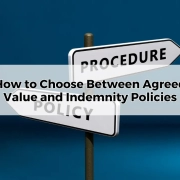How to Save Money on Life Insurance Premiums
Table of Contents
ToggleLife insurance is a critical component of any comprehensive financial plan, offering peace of mind that loved ones will be protected financially should the unexpected occur. However, the cost of life insurance can sometimes be a burden, especially if you’re not aware of the various strategies available to reduce premiums. By understanding the factors that influence life insurance costs and implementing thoughtful strategies, you can ensure that you’re getting the best possible coverage at a price that fits your budget.
The Importance of Life Insurance in Financial Planning
Life insurance is not just a policy; it’s a safeguard for your family’s future. It ensures that in the event of your untimely death, your loved ones won’t be left with financial hardships. However, as essential as life insurance is, it can also be expensive, especially if you’re not strategic about your choices. Proper planning and informed decision-making are crucial to keeping costs manageable without compromising the protection your family needs.
Understanding the Factors That Influence Life Insurance Premiums
Several factors determine how much you pay for life insurance. These include your age, health status, lifestyle choices, and the type of policy you choose. Insurers assess risk based on these factors, and higher risk typically leads to higher premiums. Understanding these variables gives you the power to make adjustments that could significantly lower your costs while maintaining adequate coverage.
Assessing Your Current Life Insurance Policy
Reviewing Coverage and Benefits
The first step in saving on life insurance is to assess your current policy. Review the coverage amounts and the benefits provided. Are you paying for coverage that you no longer need or that could be reduced? For example, if your children are now financially independent, you may not need as much coverage as you once did. Identifying these areas can help you cut down on unnecessary costs.
Identifying Overlaps and Unnecessary Add-Ons
Life insurance policies can sometimes include add-ons or riders that may not be necessary. Critical illness coverage, for instance, may be included in a policy that already provides adequate trauma insurance. By eliminating overlaps and unnecessary add-ons, you can reduce your premiums without sacrificing essential coverage.
Choosing the Right Type of Life Insurance
Term Life vs. Whole Life: Which is More Cost-Effective?
When it comes to saving money on life insurance, choosing the right type of policy is crucial. Term life insurance, which provides coverage for a specific period, is generally more affordable than whole life insurance, which covers you for your entire life. While whole life insurance builds cash value, the higher premiums may not be worth it if your primary goal is to provide for your family in the event of your death. Term life insurance offers a cost-effective solution, especially for those who need significant coverage during critical earning years.
Evaluating Income Protection and Trauma Insurance Options
In addition to life insurance, consider whether you need income protection or trauma insurance. These policies cover different risks and can sometimes be bundled with life insurance at a discount. However, it’s important to evaluate whether you actually need these additional coverages. In some cases, your existing life insurance policy may already provide sufficient protection.
Shopping Around for the Best Deals
Comparing Premiums Across Different Insurers
One of the most effective ways to save money on life insurance is to shop around. Different insurers offer different premiums for similar coverage, so it pays to compare. Don’t just look at the price; consider the insurer’s reputation, customer service, and the specific terms of the policy. Even a small difference in premiums can add up to significant savings over the life of the policy.
The Role of Online Comparison Tools in Finding Savings
Online comparison tools can be invaluable in helping you find the best deals on life insurance. These tools allow you to quickly compare premiums and policy features from multiple insurers, making it easier to identify the most cost-effective options. However, while these tools are helpful, it’s also wise to consult with a financial adviser who can provide personalised advice based on your specific needs.
Taking Advantage of Discounts and Bundling
Multi-Policy Discounts: Combining Life Insurance with Other Coverages
Many insurers offer discounts when you bundle life insurance with other types of coverage, such as home or auto insurance. These multi-policy discounts can lead to substantial savings. By consolidating your insurance needs with a single provider, you not only save money but also simplify your insurance management.
Loyalty Discounts: Rewarding Long-Term Customers
Staying with the same insurer over time can sometimes earn you loyalty discounts. While it’s important to shop around periodically to ensure you’re still getting the best deal, sticking with an insurer who rewards long-term customers can also be a strategy for saving money. Be sure to ask your insurer about any available loyalty discounts and whether they apply to your policy.
Adjusting Your Coverage to Fit Your Needs
Scaling Back Coverage as Debts Decrease
As you pay off debts such as your mortgage or loans, your need for high life insurance coverage may decrease. Regularly reassess your coverage needs to ensure you’re not over-insured. Reducing your coverage as your financial obligations decrease can significantly lower your premiums, freeing up money for other financial goals.
Tailoring Insurance to Reflect Current Lifestyle and Health
Your lifestyle and health can change over time, and your life insurance policy should reflect these changes. If you’ve made positive lifestyle changes, such as quitting smoking or improving your fitness, you may qualify for lower premiums. Likewise, if your health has improved since you first took out the policy, it’s worth discussing with your insurer or adviser to see if your premiums can be reduced.
Considering Group Life Insurance
Benefits of Employer-Sponsored Life Insurance Plans
Many employers offer group life insurance as part of their employee benefits package. These plans are often more affordable than individual policies because the risk is spread across a large group of people. While employer-sponsored plans are a cost-effective way to obtain life insurance, it’s important to understand the coverage limits and whether it will be sufficient to meet your needs.
Weighing the Cost Savings Against Potential Limitations
While group life insurance is generally cheaper, it may not offer as much flexibility as an individual policy. For example, coverage through your employer might be limited to a multiple of your salary, and it may not be portable if you change jobs. Carefully weigh the cost savings against these potential limitations to determine if group life insurance is the best option for you.
Maintaining a Healthy Lifestyle
How Fitness and Health Improvements Can Lower Premiums
A healthy lifestyle not only benefits your overall well-being but can also lower your life insurance premiums. Insurers assess risk based on your health, and those in good health are often rewarded with lower premiums. Regular exercise, a balanced diet, and maintaining a healthy weight are all factors that can positively impact your life insurance costs. Additionally, some insurers offer wellness programs that provide discounts for maintaining healthy habits.
The Impact of Smoking, Alcohol, and High-Risk Activities
Smoking, excessive alcohol consumption, and engaging in high-risk activities like extreme sports can significantly increase your life insurance premiums. Quitting smoking or reducing alcohol intake can lead to lower premiums, as can avoiding activities that insurers consider high-risk. If you’ve made changes to improve your health or lifestyle, it’s worth discussing these with your insurer to see if your premiums can be reduced.
Reviewing Your Policy Regularly
The Importance of Annual Reviews to Ensure Competitive Rates
Life insurance is not a set-and-forget product. Regular reviews are essential to ensure your policy remains competitive and aligned with your current needs. Annual reviews allow you to assess whether your coverage is still appropriate, if there are new discounts available, or if switching providers might save you money. Staying proactive with your policy management can lead to substantial savings over time.
Adjusting Coverage as Life Circumstances Change
Major life changes, such as marriage, the birth of a child, or paying off your mortgage, should prompt a review of your life insurance coverage. Adjusting your policy to reflect these changes ensures that you’re neither over-insured nor under-insured. A financial adviser can help you make these adjustments to ensure your life insurance continues to meet your needs at the best possible price.
Paying Premiums Annually vs. Monthly
The Financial Benefits of Annual Payments
Paying your life insurance premiums annually rather than monthly can lead to significant savings. Many insurers charge a small additional fee for the convenience of monthly payments. By paying annually, you avoid these extra costs and often secure a lower overall premium. If you can afford the upfront payment, this is a simple way to reduce your life insurance costs.
Understanding the Cost Difference Between Payment Options
While monthly payments are more manageable for some, understanding the cost difference between paying monthly and annually is crucial. If the convenience of monthly payments is worth the extra cost for your budget, that’s perfectly fine, but being aware of the potential savings with annual payments allows you to make an informed decision. A financial adviser can help you weigh the pros and cons of each option.
Working with a Financial Adviser
How Expert Advice Can Help You Save on Premiums
Navigating the complexities of life insurance is challenging, and working with a financial adviser can make a significant difference. An expert adviser like Rob Laurie at Wealth Factory can help you identify areas where you can save on premiums, whether through policy adjustments, lifestyle changes, or finding better deals on the market. Professional advice ensures that you’re not only saving money but also maintaining the right level of coverage.
The Role of a Financial Adviser in Tailoring Life Insurance to Your Needs
A financial adviser’s role goes beyond just helping you save money—they ensure your life insurance is tailored to your specific needs and circumstances. This personalised approach means that you’re not overpaying for unnecessary coverage, and you’re adequately protected for your unique situation. Consulting with a professional helps you make informed decisions that align with your broader financial goals.
Common Mistakes to Avoid When Managing Life Insurance
Overinsuring and Underinsuring: Striking the Right Balance
One of the most common mistakes in life insurance is either overinsuring or underinsuring. Overinsuring means you’re paying for more coverage than you need, while underinsuring leaves your loved ones financially vulnerable. Striking the right balance requires a thorough understanding of your financial obligations, dependents’ needs, and future goals. Regular reviews and consultations with a financial adviser can help you avoid these pitfalls.
Neglecting to Update Beneficiaries and Policy Details
Life changes, such as marriage, divorce, or the birth of a child, should trigger an update to your life insurance policy’s beneficiaries and details. Neglecting to update these can lead to complications or unintended consequences. Regularly reviewing and updating your policy ensures that it accurately reflects your current situation and intentions.
Conclusion
Life insurance is an essential part of financial planning, providing security and peace of mind for you and your loved ones. However, it’s important to approach it strategically to ensure you’re not overpaying for the protection you need. By understanding the factors that influence premiums and implementing the strategies discussed, you can save money while maintaining the right level of coverage.
For tailored advice on how to save on life insurance premiums and ensure your coverage fits your needs, consulting with a financial adviser is invaluable. Rob Laurie at Wealth Factory offers expert guidance to help you navigate the complexities of life insurance, optimise your policy, and achieve your financial goals. To get started on your path to smarter life insurance, contact Wealth Factory at 1300 550 940 today.









